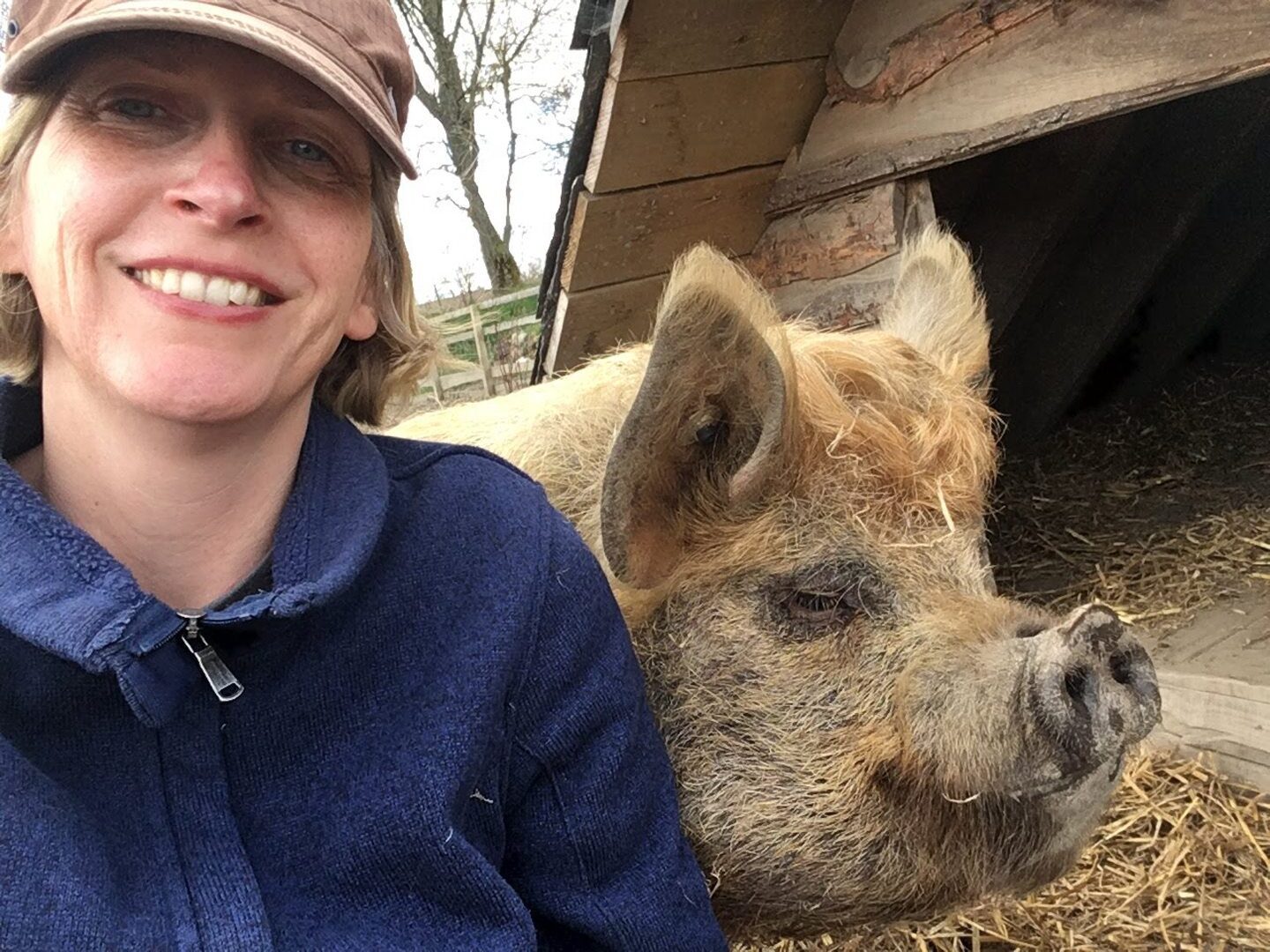If you are a fan of Amazon Prime Video’s Clarkson’s Farm, you will have seen that Jeremy Clarkson’s latest venture involves pig farming.
He and his partner Lisa are totally won over by their new livestock, and I know how they feel.
Shortly before I moved to Moray eight years ago, I bumped into a colleague in the work canteen. “I hear you’re coming north,” he said. “I’ve got piglets and puppies – which do you want?”
Now, the answer to this question for 99% of the population would probably be “neither”, or possibly “a puppy”. But, as it happened, I had always quite fancied a pig.
So, that was how, a few weeks later, we found ourselves driving to our new home with two piglets in a cardboard box. Apparently one pig gets lonely, so you have to have at least two.
My other half was less than happy when I came home and told him I’d signed us up for a couple of piglets for our new house. This was a surprise to me, because bacon is his favourite food.
My plan was that these pigs would be our introduction to being more self-sufficient: the start of a rolling programme of ethical pork. We’d breed from them and send the older ones to the butcher. “Well, if that’s the plan then you can’t name them,” my partner said. We weren’t even home before our pigs-in-a-box had been named Gingy and Spotty by me and our two young boys.
Our piglets were a rare kind: Kunekune. They originally come from New Zealand, and the breed was rescued from just 18 known animals in the 1970s.

Whilst some types of pigs can be aggressive and destructive, Kunekunes are known for being gentle and friendly. With a hairy coat, they are hardy enough to cope with a Scottish winter, and vary in colour, from white to ginger to all types of spots.
Gingy and Spotty certainly lived up to the breed’s reputation: from the moment they arrived home, our boys played in their paddock. When Gingy and Spotty weren’t innocent civilians in a Nerf gun battle, they would roll over and grunt with delight as they had their tummies tickled.
Once Gingy and Spotty were old enough, my breeding plans were put into action with a visit to Rupert the Boar at his bachelor pad in Stonehaven. Three months, three weeks and three days later (the curious gestation period of pigs), Gingy and Spotty provided a hands-on biology workshop by obligingly giving birth just as the kids came home from school.
Piglets were an educational gift which kept on giving, especially when the vet arrived a few weeks later to provide a live castration demonstration. And our pretty piglets went to homes all over Scotland – one as far north as Shetland.
You might recall that the plan was to keep a piglet or two and send Gingy and Spotty to the butcher, but this was eventually completely vetoed by Mr Bacon-Lover, who blamed me for allowing the kids to name the pigs but, in fact, could not face eating the cured product of the tummies he tickled himself.
Don’t dismiss the joys of pig-keeping
Becoming a pig-keeper has its pros and cons. Pigs are surprising clean creatures with very tidy toilet habits, but they are living ploughs. This is great if you have some rough ground you want to clear – not so helpful if you like to look out on greenery.
Finding pig-sitters is also tricky. We were settling down to a lovely meal of sushi in Edinburgh one Saturday evening when a neighbour texted us to say they’d just seen Gingy and Spotty gaily trotting down the road.
By the time we managed to alert our pig-sitter, thankfully, Bonnie and Clyde had been herded back into our garden by a mystery passer-by. Months later, we learned that the Good Samaritan was the wife of our heating engineer – a turn of events which could only happen in Moray.
And why on earth am I telling you the life story of our pet pigs? Because, sadly, this is not just a column, it is an obituary to Gingy, who passed away peacefully recently. Like a rock star, she died in the bath (albeit a mud bath). She had reached the ripe old age of eight, a fine lifespan for a pig.
So, if anyone ever offers you a piglet or a puppy, and you have a bit of land, I would urge you not to dismiss the joys of pig-keeping.
Pigs are clean, educational and good company. There are some important but easy rules to follow. You can do your bit to help the survival of breeds that are every bit as endangered as the rarest dog. And it’s a great conversation starter at social events.
So, rest in peace dear Gingy, you were a legend. Your valuable DNA is helping to preserve your kind to this day. Gingy is survived by her best pal Spotty, who is having a peaceful retirement with our seven chickens for company, and extra tummy tickles.
Eleanor Bradford is a former BBC Scotland health correspondent and now works in communications



Conversation